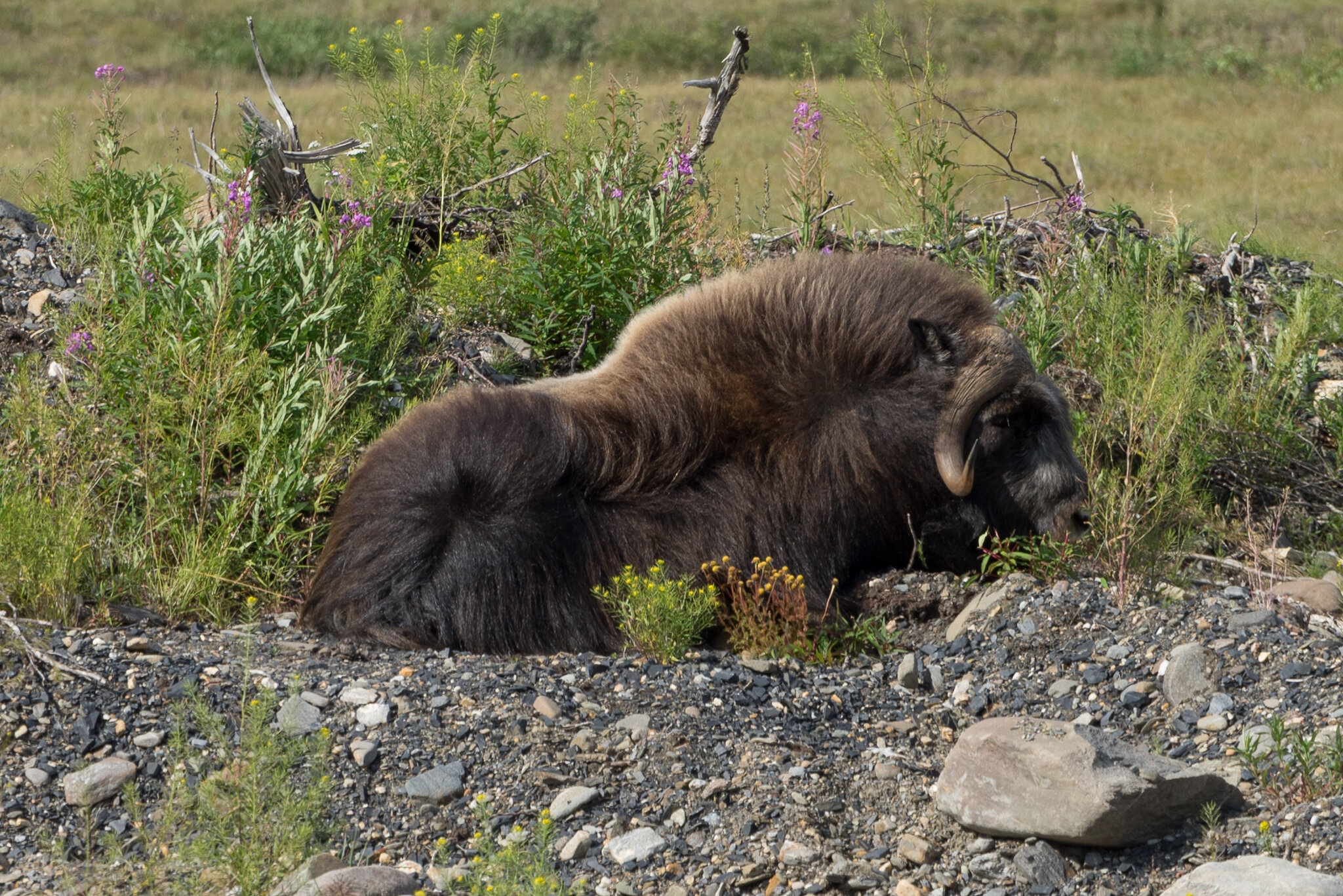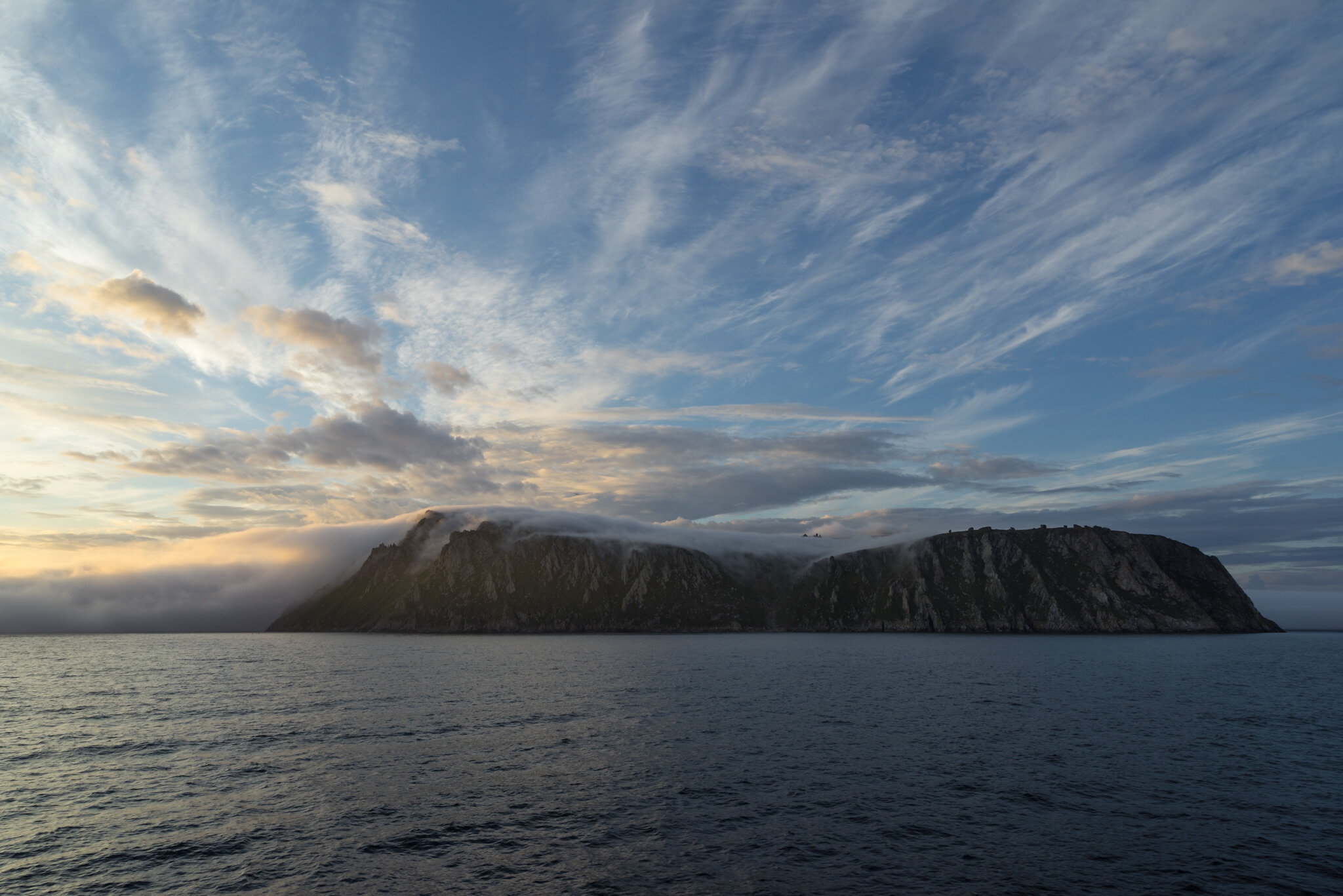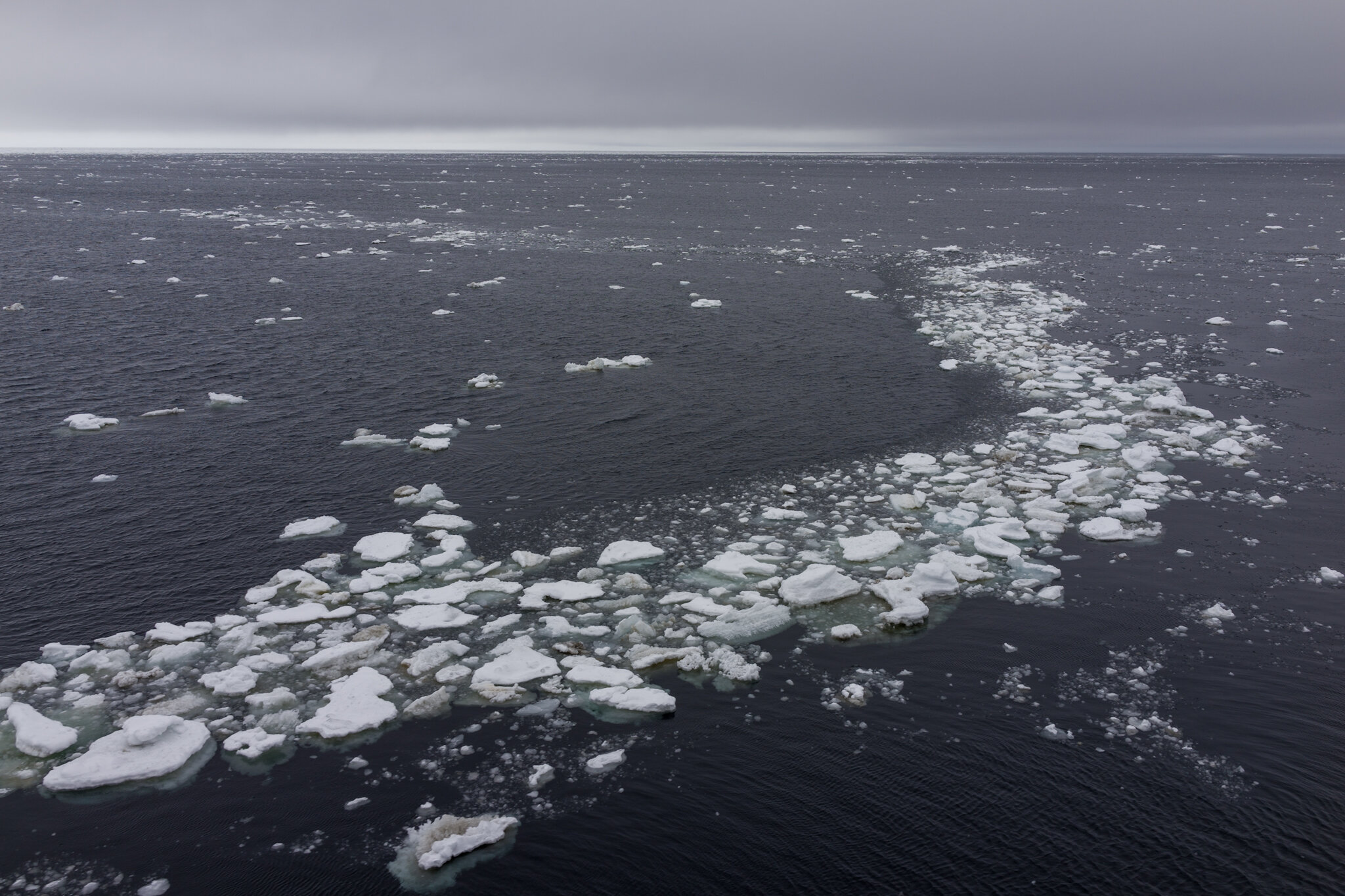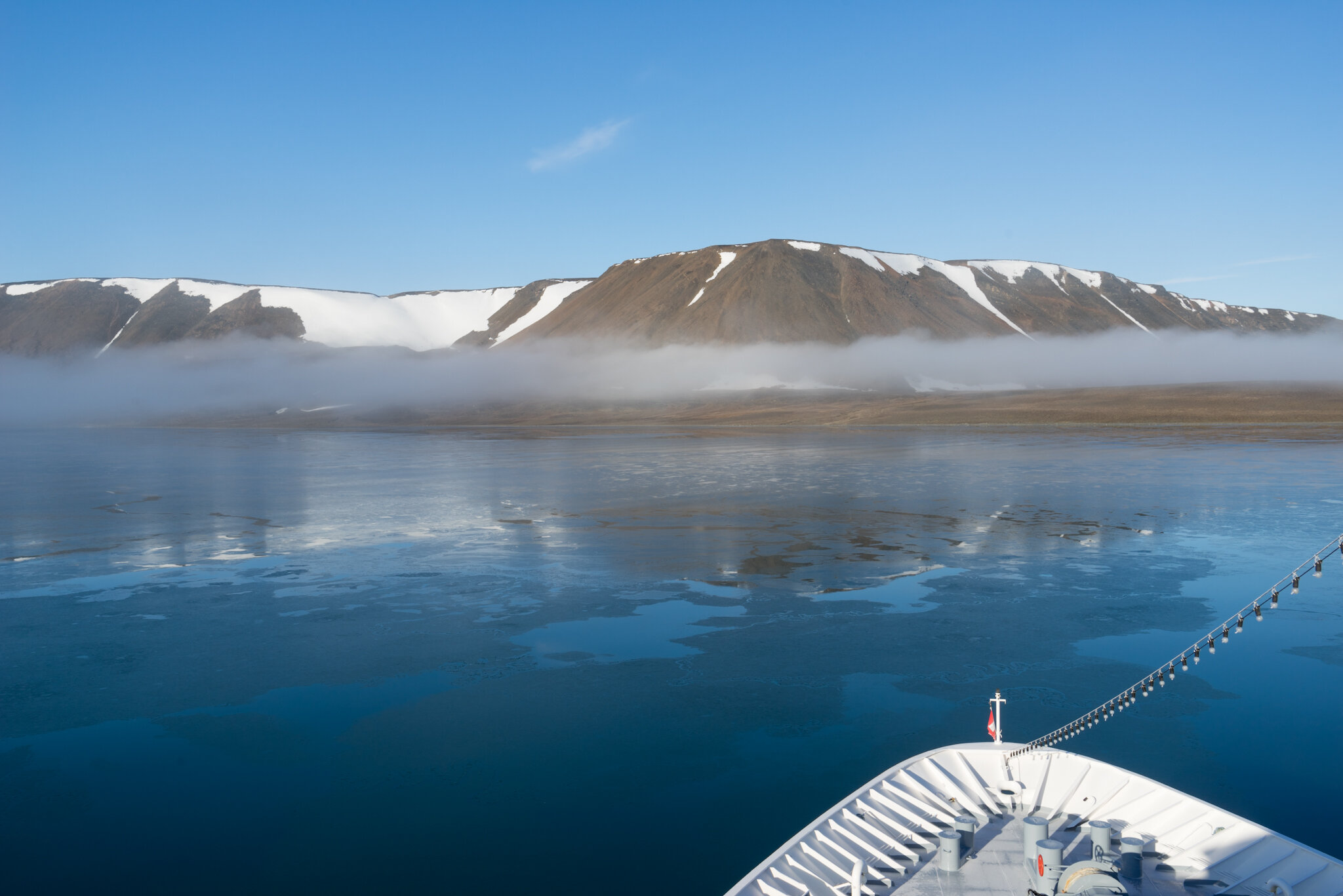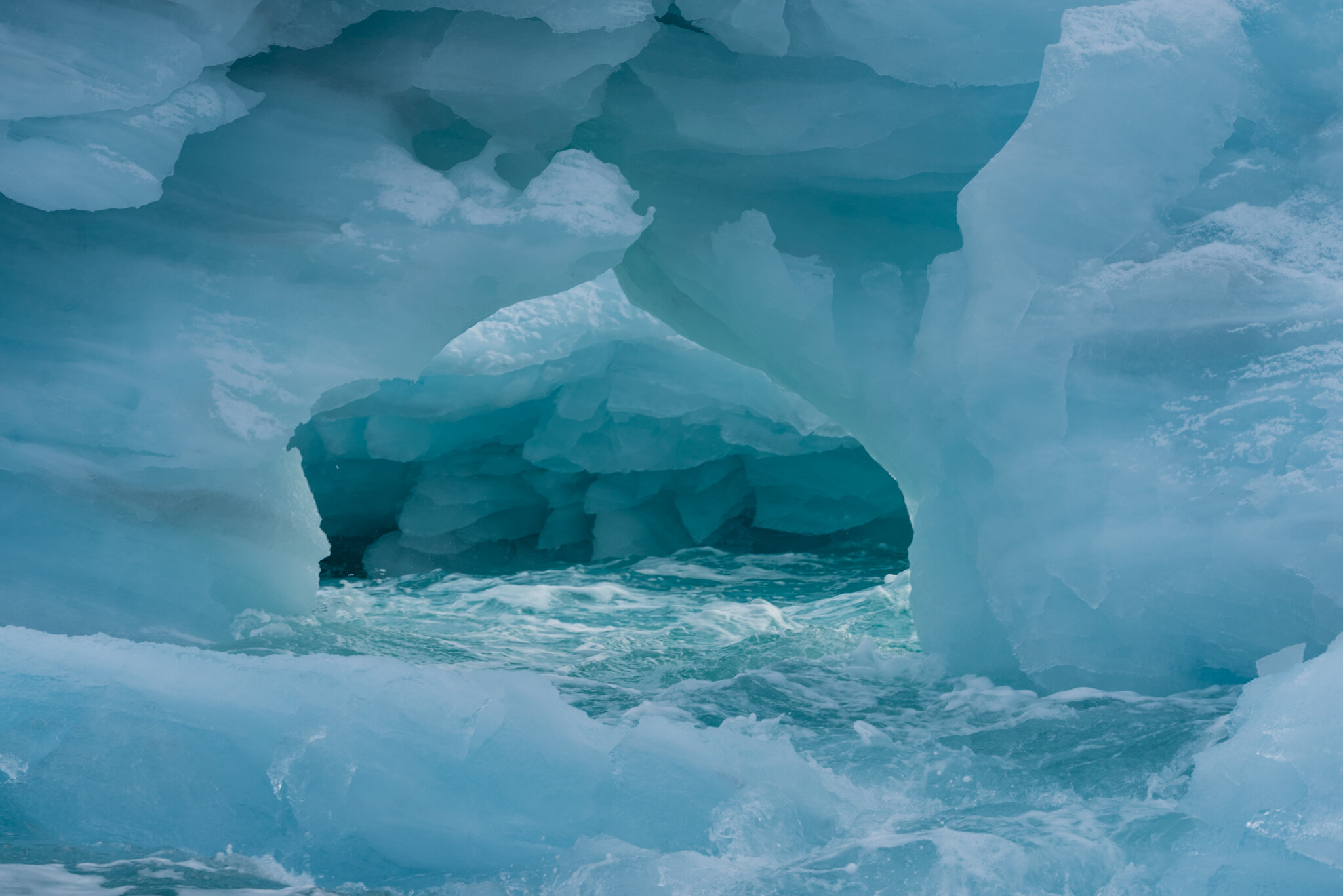Northern Sea Route 2014
As early as the 16th century, Willem Barents made his first expedition to the Arctic Sea north of Russia. At that time, the Arctic was largely terra incognita and with the existing technology, there was no way to explore this region in depth. It wasn’t until around 150 years ago, that the Swedish explorer Adolf Erik Nordenskjold successfully sailed from Sweden to Japan through the Northern Sea Route. This expedition took more than a year, which for commercial purposes was not yet interesting. With the increasingly warmer temperatures in the Arctic, Russia tries to position the Northern Sea Route, or Northeast Passage, as a reliable and safe sea route.
In 2014, MS Hanseatic planned to sail from Nome (Alaska, USA) to Bodø (Norway) through this legendary passage. It was the first non-Russian passenger ship ever to attempt this adventure. Hapag Lloyd Cruises, the company owning MS Hanseatic, invested more than 10 years of meticulous planning to make this possible.
Preparations
We were aware that this expedition could fail for many reasons. Even with the warming climate, the ice in this region is still unpredictable. Sailing across the Russian Arctic requires permissions from several government departments, and even required the sign-off from president Putin himself. These permissions are granted and revoked on short notice. Therefore, we knew that the final decision would only be taken upon arrival in our first Russian port of call, Providenyia.
Any trips to Russia require you to apply for a visa with the usual paperwork. What made this a bit more challenging was the fact, that the tour operator needed the visa of all passengers at least 3 month in advance. Which happens to be the earliest you can apply for a visa. Eventually, everything work out and we were ready to pack our Arctic gear once again.
Nome
„Nome is not the end of the world, but you can see it from there…“ To get there, we first flew from Europe to Vancouver (Canada) and then on to Nome (Alaska) on a charter flight. Upon arrival in Nome, we were invited on a short tour of the town using old school busses. Just outside of town, we spotted a herd of musk oxen. These animals are vegetarians and therefore not really interested in humans. However, their bad eyesight and skittish behavior make them some of the most dangerous animals in the Arctic. As soon as they feel threatened, the entire group attacks the intruders and tries to neutralize them by trampling them to death. We gladly used our long telephoto lens to take some pictures of these impressive animals…
After this unique encounter and a quick lunch at the local church, we could finally board MS Hanseatic from the tiny pier. After leaving Nome, we set course towards Providenyia, straight across the Bering Strait. Just before sunset, we passed King Island, an uninhabited island belonging to the US. Before going to bed, we set our watches back 4 hours. Or technically, we set them ahead 20 hours, due to the international dateline. We went to bed on Wednesday and got up on Friday!
Welcome to Russia
Our anticipation was high when arriving in Providenyia (Russia). The customs officials of this former military outpost would be deciding whether we could continue our journey or would need to turn around and sail the Northwest Passage in Canada instead. Long story short: We were good to go! But before MS Hanseatic departed Providenyia with 148 passengers and 129 crew members on board, we were invited on a short walking tour of the town. The locals even prepared a truly amazing performance of ancient and contemporary local and Russina dances and songs. This was a truly unique first stop on this journey.
Chukotka
As we were heading north, we stopped at several small towns and former ranger stations. The first was Litke Harbor, a deserted stretch of coastline with nothing more than a few ruins of buildings, a rusty shipwreck and a few whale bones. In contrast, our second stop in the small town of Lawrentiya was much livelier. The people of the neighboring towns were gathering for some kind of fair. They performed traditional dances and songs. We spent the entire afternoon there and really appreciated to be able to participate in this gathering.
Before arriving at Cape Dezhev, the official starting point of the Northeast Passage, we passed between the islands of Big Diomede (Russia) and Little Diomede (US). What a unique sight to be able to see the US on starboard side and Russia on port side. We were a few hundred meters away from the shores of Big Diomede., where a walrus herd was enjoying the sun. These animals are mostly feeding on mussels, which explains their strong odor, which was even noticeable from a distance.
Cape Dezhnev marks the easternmost point of the Eurasian continent and is known for its high winds. We were fortunate to be able to go ashore despite the strong breeze, since the cape was protecting the coastline from the northerly winds. We hiked up the cape to the old lighthouse which officially marks the entrance to the Northern Sea Route. With still increasing winds, our intended afternoon stop in Inchoun had to be cancelled.
The next morning, we arrived at Kolyuchin Island, which is known for its rich population of birds. We first used the Zodiac crafts to inspect a cliff with thousands of guillemots and puffins. This was really fascinating. Later, we went ashore and hiked to the top of the same cliff. From there, we had a spectacular view and could watch (and photograph) the birds for a long time.
Our last call on the Russian mainland for the next few weeks was Vankarem. The plan was to hike to Cape Vankarem to watch the walruses. However, there was a large herd with calves resting there. You absolutely must not upset walruses with calves. Walruses are spooked very easily and will immediately be fleeing from the shore into the sea. In this stampede, smaller walruses and calves might easily be crushed to death. While we could not approach them, we could still watch them with our binoculars.
Wrangel Island
Wrangel Island is located at exactly 180° E and/or W. Until about ten years ago, this island was mostly inaccessible due to a dense area of ice surrounding it. But the warming temperatures in this area are melting the ice faster every year. Therefore, we encountered open waters in front of our landing site near the ranger station of Somnitelnaya. Wrangel was our first stop in polar bear territory. From now on, the polar bear guards would need to secure all of our landing sites and even our Zodiac tours.
While we didn‘t encounter polar bears, we enjoyed the tundra in its full, colorful bloom. And we even discovered what was technically a forest of Arctic willows. However, these „trees“ were barely reaching our ankles. And even reaching this height took decades. We were very excited to discover a real mammoth tooth in the middle of a small stream. Mammoths survived on Wrangel until approx. 4000 years ago. What a unique experience to be able to see (and touch) something so old, so special and so precious.
Cape Blossom was next on our journey. While this name would have been adequate for our first landing with the blooming tundra, this cape was just a peninsula with rocks, pebbles and hundreds of walrus bones. Impressive but not really a place to stick around for a longer time. Which was probably a good idea anyway, since polar bears were roaming the area.
The next morning, our ship was not far from the shoreline but everything was obscured by dense fog. Under these conditions, going ashore was too dangerous. Avoiding confrontations with polar bears was always the top priority. But how should you be doing this in these foggy conditions? Our shore landings for today have therefore been cancelled and MS Hanseatic was slowly making her way through increasingly larger ice fields. Since our ship had an ice strengthened hull, we didn’t have to worry when it collided with a larger floe that sent a roaring noise and strong vibration through the entire ship.
Then, suddenly, our captain informed us „Polar bear ahead, starboard side“. He instantly brought the ship to an almost complete stop. We were drifting only a few meters/feet away from a large ice floe with a giant male polar bear. He was obviously aware of us and really put on a performance! He was inspecting his reflection in the water, was standing up, even showing his teeth and was finally going for a short swim in the Arctic Ocean before crawling onto the floe again. We have been watching him for more than an hour when he finally lost interest and trotted away. What started as a rather uneventful day at sea, became the highlight of our trip so far. As we continued on our northwestern course, we spotted many more polar bears. Fortunately, all seemed to be well fed and healthy.
Medvezhyi Islands
En route to the Medvezhyi Islands, we made a brief evening stop on Ayon Island. While there are only about 500 persons living on Ayon, they have counted as many as 33.000 reindeers there. Surprisingly, we encountered some humans, a domestic cat, but no reindeers…
Medved is the Russian word for bear. Therefore, the Medvezhyi Islands are the bear islands, which meant for us to be especially cautious when going ashore. The first shore landing was on the island of Chetyrekhstolbovoy, whose name we still cannot pronounce… This name is supposed to mean „the island with the four pillars“ and that described the landscape quite aptly: the four large, natural stone pillars were already visible from the distance. Our landing site was a deserted Russian research station. During the cold war, there have been many of these stations, which served a dual purpose: Arctic research and military presence. However, recently, Russia had to divert their funds to other areas and these stations have been abandoned. From the look of this particular station, the station crew must have left in a hurry, since they left behind most of their belongings which were now rusting and rotting away. Not really a pretty sight, but very interesting. We hiked for several hours from our landing site to the name giving four pillars. It was a wonderful hike. After many days mostly at sea, spending a few hours on solid ground was a nice change.
On our way to Krestovskiy Island, we spotted a school of five bowhead whales in the distance. These large mammals have been almost extinct. The whalers even called them the „right wale“ due to their thick layers of blubber. Fortunately, these amazing animals are now protected and their numbers are increasing again. On Krestovskiy Island, which translates as cross island, we discovered a Woolly Bear Caterpillar. This furry caterpillar takes 14 years to grow into a butterfly. It will take advantage of the short Arctic summer, and feed for a few weeks. Then, it will disappear into the ground again for 11 months. Next summer, this process will be repeated. And after 14 years, a small butterfly will develop from this amazing creature.
New Siberian Islands
After a day at sea, we reached the waters surrounding the New Siberian Islands. This area can only be accessed by smaller ships since the sea is quite shallow at only 10 meters (30 feet). The sound of MS Hanseatic crashing into a large ice floe had been waking us up at already 3 a.m. Our captain was trying his best to approach our first island here. There was an operating research station here and we were planning to visit this site. And we would have brought the local scientists some fresh fruits and salads. But the ice surrounding the island was so dense, that we didn‘t have any chance of getting there. While we were completely happy enjoying the beautiful view, it might have been a bigger disappointment for the research crew who didn‘t get our food package.
Our alternative plan was to go ashore on Belkovskiy Island. No one from our crew has been there before, why looking for a suitable landing spot was a bit more challenging than usually. But that‘s expedition cruising! We finally found a beautiful landing site on a black pebble beach. Despite light rain, we enjoyed this stop in the middle of nowhere.
The De Long Islands are a group of islands belonging to the New Siberian Islands. In this region, the mystical Sannikov Island is said to be located. This island is known as Atlantis of the Arctic and is displayed on several maps and mentioned in several expedition reports, including the one from Nordenskjold‘s first passage through the Northern Sea Route. However, Sannikov Island seems to somehow have disappeared. It is not known, whether the old sailors have just been spinning a yarn or if Sannikov really existed and has somehow been eroded away since. Anyway, we haven’t discovered Sannikov Island but enjoyed the wonderful midnight sun at around 76°N.
Our last shore landing in the New Siberian Islands was on Bennett Island. This island was discovered by the American polar explorer De Long in 1881. Shortly after, there have been discussions between Russia and the US, whether this should be US territory. This question has never been formally resolved, but both governments seem to agree, that the De Long Islands, including Bennett Island, do belong to Russia. We finally found a suitable landing site on a pebble beach. We enjoyed a long walk along the beach and finally reached a more secluded area, where two walruses were laying on the shore. What a wonderful encounter!
85°N
Towards the end of our passage, we would have been visiting the remote archipelago of Franz Josef Land for three days. We were granted all the required permits from the Russian ministry of tourism. However, the Russian military was obviously having some kind of activities in the region and therefore canceled our permits on short notice. Our captain decided, that we would be compensating for this by using these three days in a very unique way.
There has been a completely ice free area extending further north than usually. We would try to get as far north as possible. After almost two days with a northern course, we finally reached solid ice at exactly 85°40.8‘N and 136°04.4‘E. This was a world record for a conventional passenger ship! We could even do a short Zodiac cruise at this special location, less than 500km away from the North Pole. Our first officer was the first to get into the Zodiacs, claiming „I am the first man on 85°N in a rubber boat!“
After this world record, south was the only direction we could be heading… With temperatures below freezing and a light snow, we could feel the winter approaching quickly. We even built a small snowman on the deck of MS Hanseatic! While this was nice, the most critical point of the Northern Sea Route, Cape Chelyuskin, was still ahead. This area is known for ice barriers that are sometimes impenetrable. Therefore, temperatures below freezing were not necessarily good news.
Severnaya Zemlya
As expected, the northernmost point of the Eurasian continent, Cape Chelyuskin, was not accessible due to the local ice situation. However, the ice charts showed a route further north, around the islands of Severnaya Zemlya, that would allow for a safe passage. Therefore, we first headed for Bolshevik Island, the southernmost island of this archipelago. But before we went ashore there, we made a surprise stop at a large ice floe in the middle of Vilkitsky Strait. This floe was solid enough that we were able to walk on it. While the ice looked like solid ground, we knew that we were walking on a relatively thin layer of ice with at least 200 meters (600 feet) of ice cold water beneath our feet. During the two hours we spent there, the ice floe moved as much as 5 nautical miles!
After our expedition to 85°N, we first set our feet on solid ground again in Solnechny Bay on Bolshevik Island. The „sunshine bay“ lived up to its name and we spent a wonderful evening walking across the tundra in the golden sunlight. The next morning, we sailed into Akhmatova Fjord. With just the right mix of sun and fog, this fjord was a wonderful place to start the day. The temperatures were still below freezing and the first fresh ice was forming. As MS Hanseatic was slowly gliding through his thin layer of ice, it sounded and looked as if breaking glass. What an amazing spectacle! On shore, the few remaining flowers, mostly Arctic poppy, were completely covered with ice. Therefore, we spent most of our time close to the ground, trying to capture the beauty of this place.
We spent the afternoon Zodiac cruising around the icebergs of Mikoyan Bay. While the sun was still shining, the wind had picked up. This made for a bumpy and wet Zodiac ride. But our Sony A7R cameras fortunately proofed to be surprisingly water resistant.
During the night, we have sailed to Komsolmolets Island, the northernmost island of Severnaya Zemlya. After the fog had cleared up, we could go ashore in Zhuravlev Bay for a short walk. The distance to our afternoon stop was short. Schmidt Island is just next to Komsolmolets Island. But since the engine crew of MS Hanseatic was working on one of the engines, we sailed at a more leisurely speed. However, we arrived there with perfect timing. Schmidt Island is almost completely covered with ice. There is only one possible landing site. And close to this site, an obviously hungry polar bear was eating sea grass. Our expedition leader decided that we were still allowed to go ashore, but only in small groups and for a very short walk for safety reasons. But the bear was not interested in us and kept eating his vegetarian diet.
Novaya Zemlya
In the middle of Kara Sea, about halfway between Severnaya Zemlya and Novaya Zemlya is a small island, Vize Island. It‘s probably one of the most remote islands of the world. We planned to go ashore there and visit the research station, if the conditions would allow. Unfortunately, a strong breeze and high waves made it impossible to even consider going ashore. The wind even picked up on our way to Novaya Zemlya and for the first time on this journey, MS Hanseatic moved a bit more noticeably.
Most of Novaya Zemlya is off limits due to the heavy presence of the Russian military. To even be allowed to go ashore, a local ranger has to accompany the ship. Therefore, our first stop was at Cape Zhelaniya, the northernmost point of the islands, where we picked up our ranger. We originally planned to go ashore there, too. But next to the ranger station were 15 polar bears roaming the area. The rangers seem to have arranged themselves somehow with these dangerous animals. But for tourists, this was definitely not the place to be.
But we could finally set foot on this mysterious island at Vitnay Bay, close to the Willem Barents monument. More than 500 years ago, Barents had to spend an entire winter here. It was also in this area, where Barents‘ final expedition was lost. We enjoyed the walk on these historic grounds. For the first time since venturing to 85°N, we discovered small blooming flowers again. What a pretty sight! On a sloping hill, we located a polar bear den, probably from last winter. We could still see some white polar bear hair on the ground.
The next morning, we planned to try a shore landing on one of the Oranskie Islands. But heavy wind, snow and high waves directly on the shore prevented us from going ashore. Therefore, our next stops was again Cape Zhelaniya, where we dropped our ranger. Since the numerous polar bears were still there, again we couldn’t go ashore there.
Before leaving Novaya Zemlya towards Murmansk, we had one last surprise stop in Inostrantsev Bay. Without a Russian ranger, you would normally not be allowed to enter the fjords of Novaya Zemlya. But the Russian government made a rare exception and allowed us to even use our Zodiacs for cruising around the majestic icebergs in the bay. Already on our way into the bay, we admired the dark mountain ranges covered with fresh snow. This looked like a black and white picture. With snow still in the air, we descended into our Zodiacs for what would be the last expedition stop of this incredible journey. With an overcast sky and the sun just occasionally breaking through, the icebergs glowed in a deep blue color. We could even hear the ice crackling as the small air inclusions popped while melting.
Murmansk
We spent the following two days at sea, crossing the Barents Sea. Only a occasional school of humpback whales crossed our course. We enjoyed these relaxing days on board, sorted through our photos, connected to the internet for the first time in almost two weeks and relived some of the most beautiful memories of this wonderful journey.
Our arrival in Murmansk marked the official end of the first ever crossing of the Northern Sea Route by a non-Russian passenger ship. After spending three weeks in the middle of nowhere, docking on a pier in the middle of a city felt really special. We would first have to get acclimatized to seeing this many people again.
After customs clearance, we were allowed to go on a tour of this 300.000 inhabitant city. We had the opportunity to visit the former nuclear icebreaker Lenin, that now serves as a museum. Still today, Russia operates a fleet of nuclear icebreakers. We could see some of them in the port of Murmansk and in drydock as we were leaving the city on our way to Norway.
Norway
After celebrating the successful completion of the passage with a small party on board, we sailed close to the North Cape the next morning. With mild summer temperatures, this northernmost point of Norway felt more like the Mediterranean Sea than the Arctic Ocean. In the afternoon, we reached the city of Hammerfest. There are two things you absolutely have to do when visiting Hammerfest: You have to become a member of „The Royal and Ancient Polar Bear Society“ and you have hike up Sikksakkveien (zigzag path) to Salen, a local hill with a gorgeous view. Obviously, we did both! After this last call, MS Hanseatic set course to our port of disembarkation, Bodø.
We spent the last day at sea. Packing our suitcases after almost four weeks on board wasn‘t easy, literally. This has really been our most exciting journey and we feel privileged to have been able to participate in this adventure. It will probably take weeks to fully appreciate this journey. We have participated in 22 Zodiac trips, have taken more then 8.000 photos, have been offline for almost two weeks and have circumnavigated the world completely.
The crew of MS Hanseatic and our fellow guests were just wonderful. After four weeks, we felt like family. Saying goodbye wasn‘t easy!

